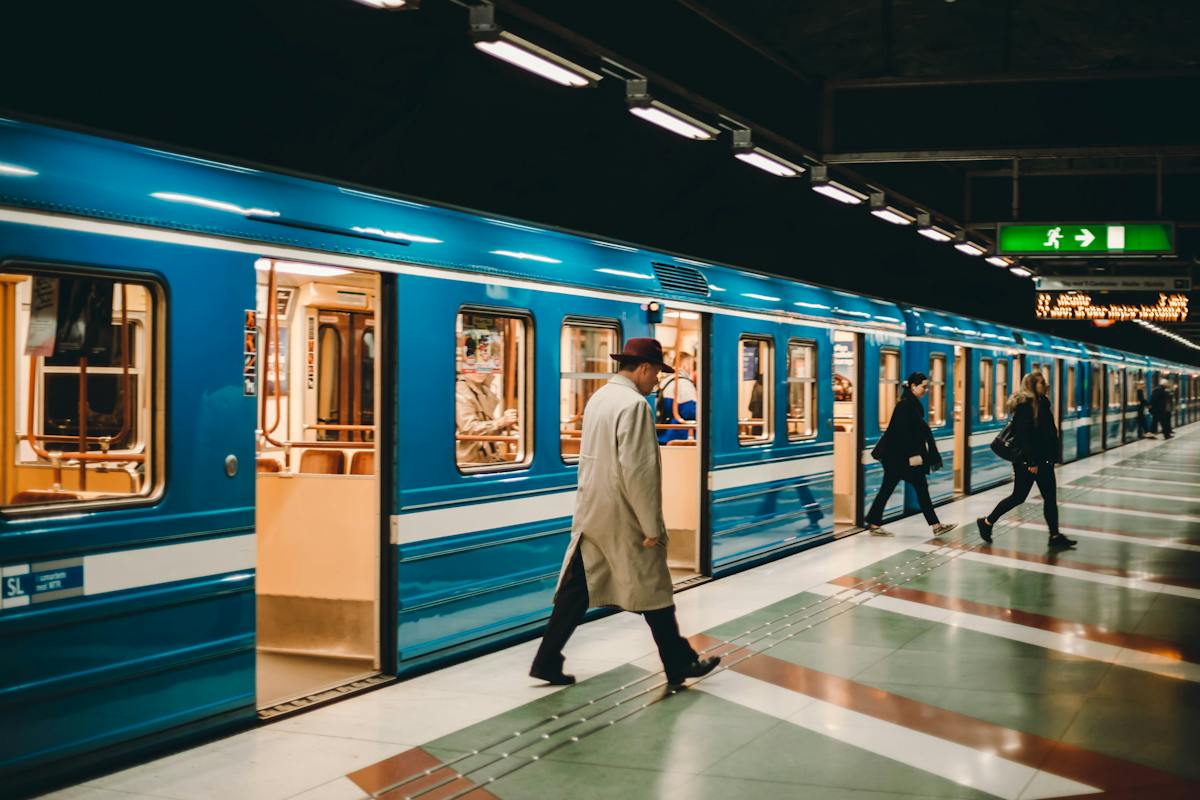- The daily commute is shaped by top-level decisions made in the transit world’s stratosphere.
- In Singapore, SMRT CEO Ngien Hoon Ping is crucial in managing and improving transportation.
- Every decision, from train frequency to comfort levels, impacts commuters’ experiences.
- Executives are constantly strategizing and problem-solving behind the scenes to streamline the daily chaos.
- Delays, crowds, and comfort are all aspects of the commute influenced by top-level decisions.
If you’re reading this, chances are you’ve spent your fair share of time jostling for space in a train carriage, sprinting to catch the last bus, or sighing in resignation at the announcement of another delay.
Most people have been there. But have you ever paused to wonder what, or rather who, is behind all these daily commuting dramas? Well, buckle up! This blog post will take you on a fascinating ride behind the scenes, exploring how the big decisions made way up in the transit world’s stratosphere impact your every scramble for a seat or timely arrival.
The Invisible Hand: How Top-Level Decisions Shape Your Journey
It’s easy to forget that your daily commutes, the good, the bad, and the delayed, don’t just happen by chance. They’re the ripple effects of decisions made in boardrooms and executive offices, far removed from the hustle and bustle of your transit routines. And it’s in these spaces that the journey of every commuter subtly gets dictated.
For instance, in Singapore, the SMRT CEO, Mr. Ngien Hoon Ping, oversees transportation. As head honcho of Singapore’s most prominent public transport operator, he wields immense power in steering the island nation’s transit system and shaping commuters’ daily experiences. They travel down the echelons, influencing how swiftly and comfortably you reach your destination.
Take something as simple as train frequency. It’s not merely a matter of adding more trains because there’s demand. It’s a delicate balance between managing operational costs, maintaining safety, and ensuring efficiency.
These top-level decisions subtly guide your every step from home to destination. The daily commute is a story told by those who lay down the tracks, figuratively speaking.
Unpacking the Daily Commute: Delays, Crowds, and Comfort

When it comes to transportation, the devil is in the details. And no one knows this better than those working at the top. They understand that every little decision, from the type of train seats to whether or not to install air conditioning, can impact your daily commute.
Morning Rush vs. Executive Rush
Imagine this: your alarm goes off, and you’re out the door, hustling to avoid the infamous morning squeeze. Now, picture the transit execs – they’re not battling for a spot on the train, but they’re in a rush of their own: the rush to make decisions that streamline your morning chaos.
It’s a world where seconds count, not just for catching your ride but for the decisions that ensure it is there to see. This behind-the-scenes ‘executive rush’ is a flurry of strategizing and rapid problem-solving, all to make your daily scramble a bit less <scrambly.
Delays: Not Just Bad Luck
“Train’s delayed. Again!” Sounds familiar? It’s not just a twist of lousy fate when this happens. Sometimes, it’s the result of a series of top-level calls. Maybe it was a choice to update the older systems, leading to temporary glitches, or a decision to reroute certain lines for longer-term efficiency. These decisions aren’t made lightly, and they consider the big picture, even though it might not feel like it when you’re stuck waiting.
The Crowded Space Dilemma
Nobody enjoys a sardine-can situation on their commute. So, why does it sometimes feel like you’re in a mobile tin can? Here’s the scoop: executives have to juggle cost-effectiveness with comfort. They plan carriage numbers and schedule timings, aiming to match the ebb and flow of commuter traffic. It’s a high-stakes game of Tetris, fitting in as many people as possible without tipping the scales into ‘packed-like-sardines’ territory.
Comfort: More Than Just a Seat
Finding an empty seat during rush hour can feel like striking gold. But comfort on your commute is more than just a place to park yourself. Have you ever noticed how some stations are cleaner, have better facilities, or perhaps more helpful staff? That’s no accident.
These are facets of your journey shaped by negotiations and contracts at the executive level. The goal? Make your transit experience more than just getting from Point A to B, but feeling okay.
Bridging the Gap: What Can Commuters and Executives Learn from Each Other?

Here’s a thought: more dialogue could be the game-changer. If execs tapped into your ground-level insights and people had a better grasp of the constraints they’re working with, imagine the improvements in your commute.
Transparency in decision-making could demystify why specific changes occur or take so long. On the flip side, if executives had a clearer picture of commuter life—your needs, your daily hurdles—they could make decisions that resonate more with your experiences.
The Bottomline
Your commute is a story written long before you step out your front door. Every twist, turn, and unexpected stop is part of a larger narrative, penned by individuals striving to steer the journey in the right direction. And while there may be bumps in the road, remembering you’re not alone on this trip may make the ride a little smoother.


